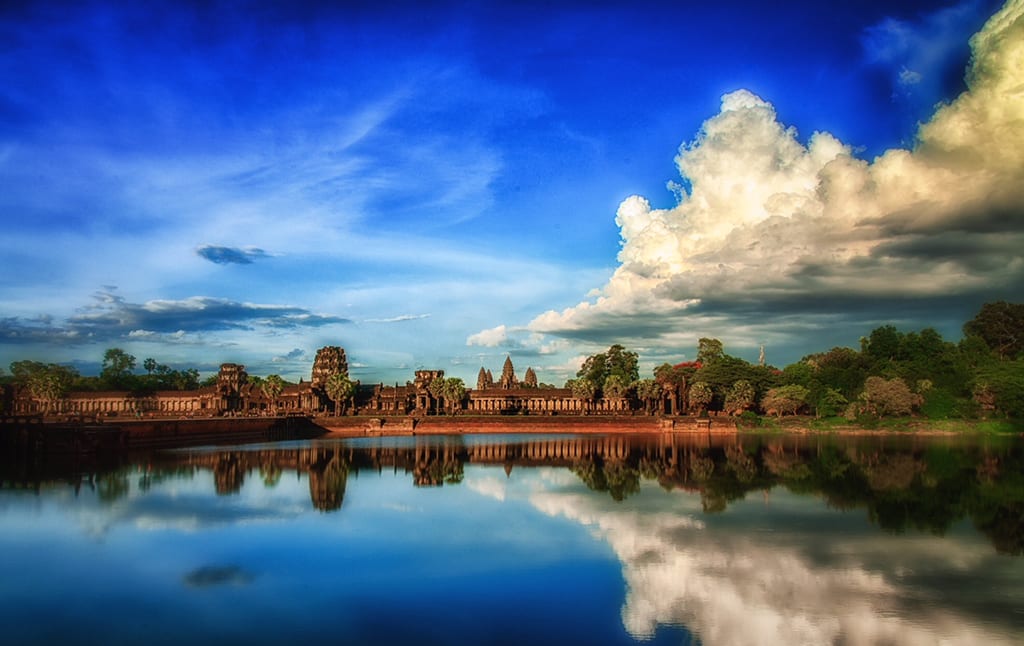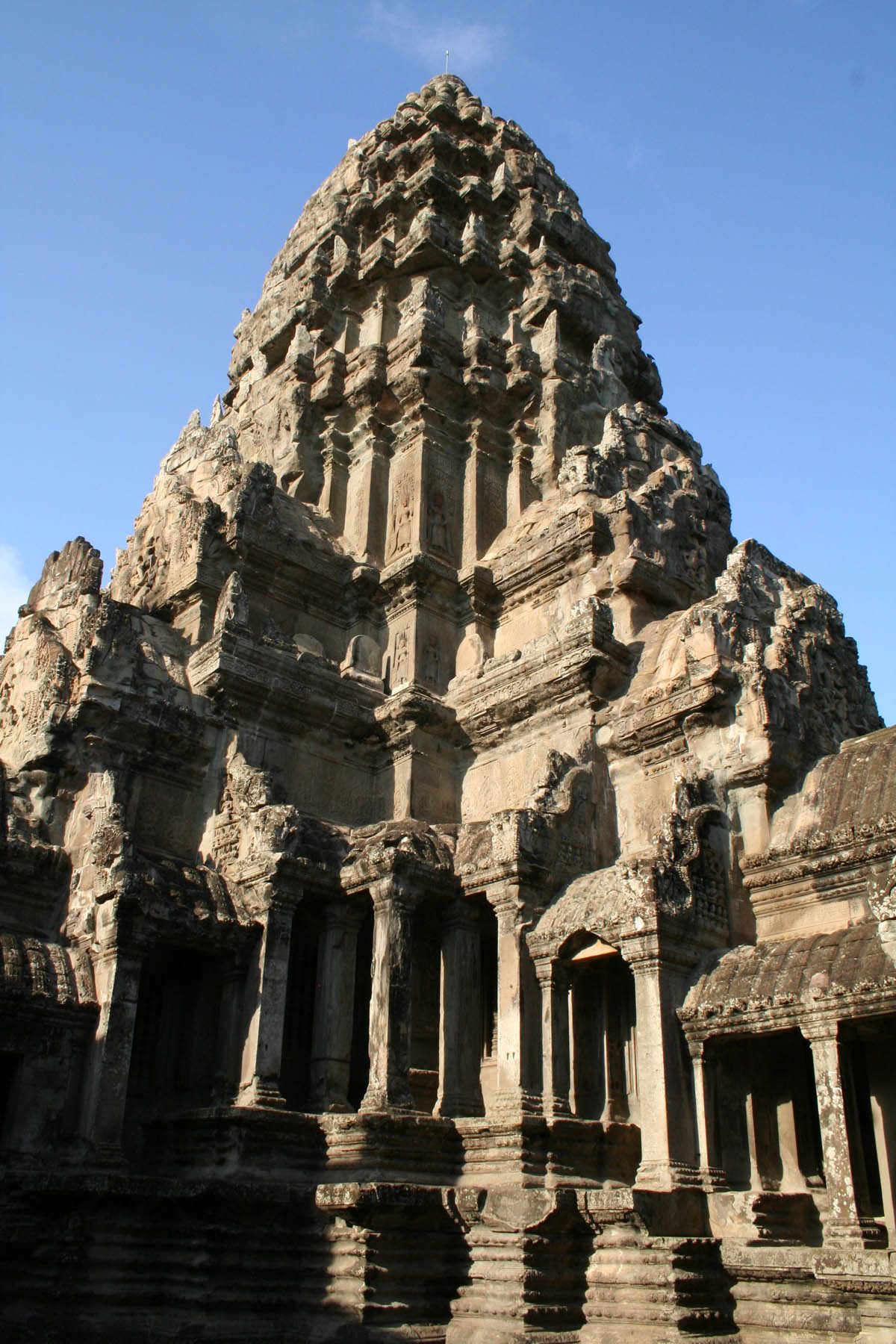Angkor Wat
Without doubt, Angkor Wat sits at the very top of all the Siem Reap attractions, and it is clear to see why.
History of Angkor Wat
The building of Angkor Wat was finished in 1150 by King Suryavarman II, when the Khmer Empire was at its height.
Angkor Wat served as the capital of the Khmer Empire and as the State Temple of the King, dedicated to the Hindu god Vishnu. The temple is of huge proportions – one of the biggest religious monuments in the world – and is breathtaking when first seen. The five peaks of the temple mountain layout can be viewed over the walls when approaching the temple area from Siem Reap, and this is usually the first glimpse visitors get.
The central temple mountain, and succession of walled enclosures and surrounding moat, is a representation of the universe according to Hindu mythology.

Unusually, the temple faces west, and the most impressive entrance gallery is from the western approach causeway. While most people visit in the morning, the best light to photograph the front of the temple is in the afternoon. Sunrise over the towers of Angkor Wat is spectacular and a very peaceful time compared to the crowds during the day.
The five towers of Angkor Wat reach 65 metres above ground at their peak. The form of the towers is representative of the lotus flower, with each tier opening up and the next rising up from the middle of the one before.
Hindu Mythology
The temple is highly-decorated with carvings, including nearly 2,000 apsara figures adorning its walls. Around the outer gallery of the temple, there are almost 600 metres of narrative bas-reliefs depicting stories and characters from Hindu mythology, and the Khmer version of the Ramayana called the Reamker.
In this, Rama rescues Princess Sita from the island of Lanka in the Battle of Lanka shown on the north wing of the west gallery. Also featured is the Churning of the Sea of Milk, a story from Hindu mythology where gods and demons churn the primordial ocean to produce the elixir of immortality. This is depicted on the south wing of the east gallery, which also features the historical wars with the Chams during King Suryavarman II’s reign.
The area within the outer walls and moat of Angkor Wat is considerable in size. The space would have been filled with wooden buildings, houses and a Royal Palace for King Suryavarman II, when the temple area functioned as the capital city.
Where is Angkor Wat?
It is in the Angkor complex, a few kilometres from Siem Reap.
Nearby Attractions
The first temple as you enter Angkor, depending upon your access point, it is closest to Angkor Thom.



